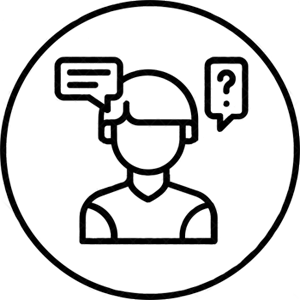Biophysics Research
Joshua Toth '20 Research with Professor Robert Spalletta
The strength of ant cuticles is altered by exposure to antibiotics. The definition of hardness in biological systems, where structural changes can range from the macroscopic to the molecular, is not clearly defined. This investigation uses an AFM to study the topology of a portion of the cuticle from an ant thorax.
This is the first report of topology that includes features in the range from 10 angstroms to 25 microns. Preliminary studies show that the cuticle is made up of thin plates (approximately 100nm thick) with a surface area of order 10 square microns. These studies do not show a statistical difference between the plate topology of treated and untreated ants. These studies do show a statistical difference between the roughness of the plates between the two groups, as detected by lateral force measurements with the AFM.
Currently, investigations focus on analysis and comparison of reflectance spectra taken of the sample groups in an attempt to identify any differences in geometry which may imply structural differences.
(This research was presented at the 65th Annual Conference of the Central Pennsylvania Section of the American Association of Physics Teachers held at the University of Scranton on April 21-22, 2017.)
The median wage for biochemists and biophysicists was $82,180 in 2016.
U.S. Department of Labor Statistics
Joseph Delmar '19, Biophysics and Philosophy Major
"At the University of Scranton, I've done a variety of different computational physics projects. Currently, I'm working with Dr. Juan Serna on using numerical methods to solve the Schrodinger equation for nonlinear systems.
At the University of Arkansas, I worked with Dr. Salvador Barazza-Lopez on theoretical/computational solid state physics research. This involved carrying out simulations on the University Arkansas's Trestles supercomputer to see how increased temperature affected the phase transitions of two-dimensional silicene, stanene, and germanene. The results of these simulations were analyzed based on
Matthew Reynolds '18 Receives Goldwater Scholarship
The University of Scranton’s newly minted Goldwater Scholar Matthew Reynolds can easily discuss hydrophobins, cilia and microtubule doublets with the same unbridled enthusiasm that other college students may express for the first warm, sunny days of spring.
With research already published in a peer-reviewed scientific journal, Reynolds became the 12th Scranton student in 15 years to earn a prestigious Barry M. Goldwater Scholarship, the premier undergraduate scholarship for the fields of mathematics, natural sciences
Reynolds, of Apalachin, New York, was among just 240 students from 157 colleges in the nation to earn a Goldwater Scholarship for the 2017-18 academic year. He is one of only six students from Jesuit universities to be awarded a Goldwater Scholarship this year. In addition to Scranton, Boston College, Georgetown, St. Joseph’s, The College of the Holy Cross and Creighton University each also had a student earn a Goldwater Scholarship.
“Matthew was selected to receive the Goldwater Scholarship from a highly-competitive field of 1,286 students nominated by campus representatives of colleges and universities from across the country,” said Mary Engel, Ph.D., director of health-professional school placement and fellowship programs at the University, who noted he was a Goldwater Scholarship finalist last year as a sophomore at Scranton.
“I want to be a good research scientist for my future career, so I need to be versatile.”
Matthew Reynolds '18
Reynolds takes a pioneering approach to research, applying his studies across the disciplines of biology, physics, mathematics
“I want to be a good research scientist for my future career, so I need to be versatile,” said Reynolds. “One way to do this is to be able to develop my own software and to know how to work with large
Reynolds has already developed software for image processing and analysis for biological applications that are available to University students for the cellular biology lab, where he serves as an undergraduate teaching assistant. He has also written software programs for his own research.
“I wrote an image-processing package that basically used an exhaustive optimization technique to generate width profiles for cilia,” said Reynolds. “When I was learning optimization strategies in a computer science class with Dr. (Benjamin) Bishop, I found myself saying ‘Wow, this is exactly what I needed for my research.’ I immediately implemented it, and this approach worked to answer the question I was posing in my study.”
Comfortable with state-of-the-art equipment and cutting-edge research techniques, Reynolds has experimental experience with cryo-electron microscopy and tomography, conventional transmission electron microscopy, protein complex isolation and immunocytochemistry, to name a few.
“I like the questions posed in biology – but I also really like the methods and the way of understanding that comes from physics and math,” said Reynolds “I am most interested in research that crosses these boundaries.”
Read more, here.







